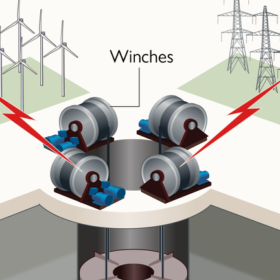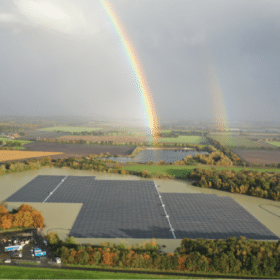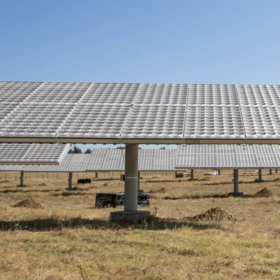Kaco unveils string inverters for rooftop solar arrays
Kaco has launched a new line of blueplanet NX3 three-phase string inverters for applications ranging from small residential rooftop arrays to projects on commercial buildings. They have outputs between 3 kW and 33 kW, a maximum efficiency of 98.0%, and a maximum European efficiency of 97.6%.
Perovskites and microgrooves can revolutionize solar
Ambitious targets for solar energy generation present challenges to an industry keen to explore new avenues for solar production. Neil Spann, chief executive of UK thin film solar manufacturer Power Roll, describes a commercial solution to the problems of over reliance on silicon solar modules.
Gravitricity launches gravity energy storage pilot in India
UK-based Gravitricity plans to set up a pilot demonstration project for its gravity energy storage systems in India.
Australia’s newest big battery hits construction milestone
Hitachi Energy is delivering the 35 MVA Darwin-Katherine Battery Energy Storage System in Australia’s Northern Territory. Now that civil and building works have been completed at the $30.2 million big battery site, the company will deploy tech to provide virtual inertia and system strength services to the grid.
Floating solar cost-competitive with ground-mounted PV in southern Europe
Researchers have assessed the economic viability of utility-scale floating solar arrays in Europe and have determined that such projects are already cost-competitive in several southern European countries. They claim floating PV could become competitive across Europe if capital costs are reduced by 12%.
Philippines increases net-metering size limit for renewables to 1 MW
New provisions in the Philippines define interconnection standards, the certification of compliance requirements, and pricing methodologies, among other matters.
Portuguese company to build 75 MW solar-to-hydrogen facility in California
A proposed 75 MW solar-to-hydrogen facility in California could mark the start of Fusion Fuel’s green hydrogen vision for the United States.
New manufacturing process for high-quality mono cast ingots
Chinese scientists have made mono cast silicon ingots with high purity and low manufacturing costs. The new method will help industrial casting manufacturers to improve the cost performance of casting ingots.
How variable is rooftop solar power?
A research group has developed a new methodology that shows PV systems located in the same area could have similar distributions of power ramps. Their three-step method could be used for the dimensioning of rooftop arrays and the scheduling of daily operations.
Canada set to hit 5 GW milestone
Canada is set to install 500 MW of new solar in 2022, bringing its total capacity to about 5 GW, according to data from Canmet Energy. The country is expected to hit 35 GW of total solar capacity by 2050.










